Access control systems provide a secure and efficient way to manage access to physical spaces and digital resources. These systems offer several benefits:
- Enhanced Security: By limiting access to authorized individuals, access control systems help protect sensitive information, valuable assets, and critical infrastructure from unauthorized entry or use.
- Customizable Access Levels: Administrators can grant specific permissions to individuals or groups, enabling granular control over who can access which resources or areas. This allows organizations to manage access according to job roles or security clearance levels.
- Accountability and Audit Trail: Access control systems log entry and exit events, providing a clear record of who accessed a given resource or area and when. This audit trail can be useful for investigating security incidents, monitoring employee activities, and ensuring compliance with regulations.
- Reduced Costs and Resource Burden: By automating access management, organizations can reduce the need for physical keys, security guards, or manual administration, which can result in cost savings and improved efficiency.
- Scalability and Flexibility: Access control systems can be easily expanded or adjusted to accommodate organizational growth or changes in security requirements.
- Time and Attendance Tracking: Some access control systems include time and attendance management features, allowing organizations to monitor employee work hours, enforce time-related policies, and generate attendance reports.
- Centralized Management: Access control systems often provide a centralized platform for managing access permissions across multiple locations, streamlining administration and ensuring consistent security practices.
- Integration with Other Systems: Many access control systems can be integrated with other security systems, such as video surveillance, intrusion detection, or building management systems, creating a comprehensive security solution.
- Enhanced User Experience: Modern access control systems often support user-friendly interfaces, multiple authentication methods (e.g., key cards, biometrics, mobile devices), and seamless access, improving the user experience for authorized individuals.
- Compliance with Regulations: Implementing access control systems can help organizations comply with industry-specific regulations or data protection laws that require controlled access to sensitive information or restricted areas.

